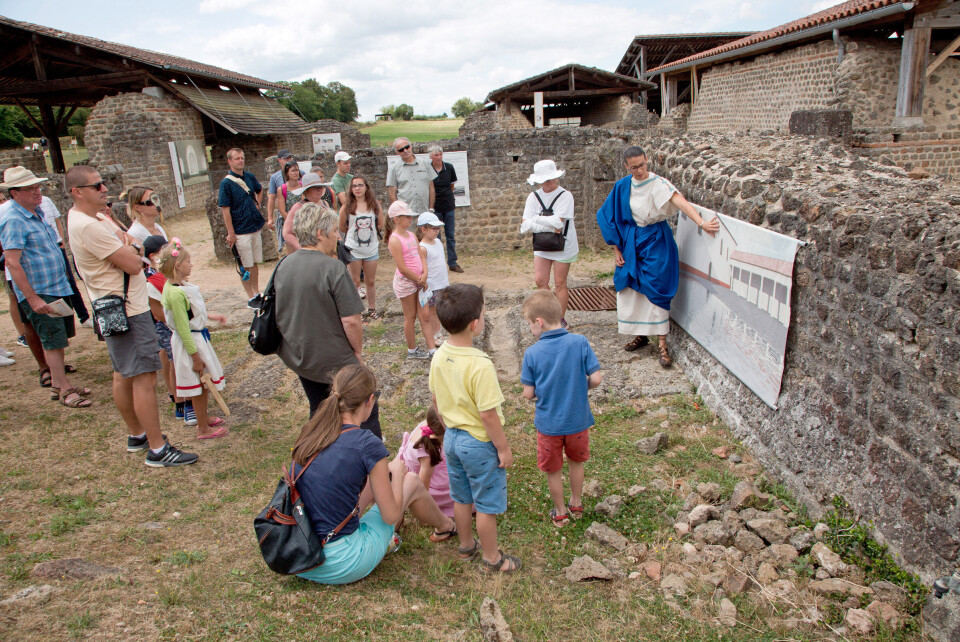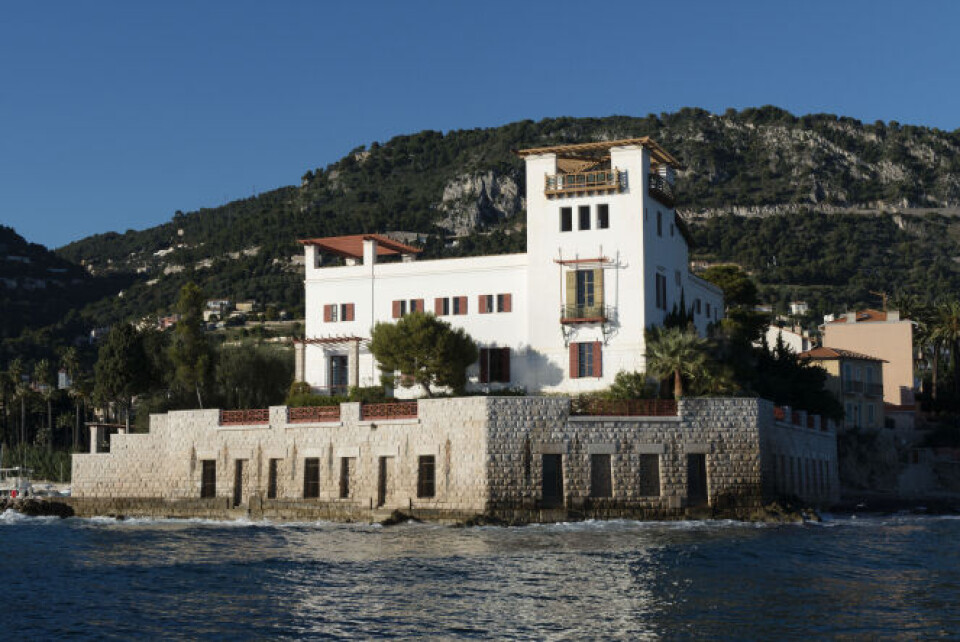-
Photos: 94 chateaux open their doors to visitors in Dordogne
The fifth Chateaux en Fête festival offers a chance to look around many impressive properties that are usually private
-
Martel: the medieval French town home to a 'truffle' train and lavender festival
The small town in the Lot offered refuge to an English throne heir until his death
-
Brittany lighthouse lens removal leads to public outcry
A petition gained over 20,000 signatures, highlighting the ongoing battle over the buildings' heritage in France
Explore the sites to see the legacy of France’s glorious Roman past
We ask ‘what have the Romans ever done for us?’ and discover the answer is ‘quite a lot, actually’, as the sites, museums, roads and villas dotted all over the country reveal

The Romans occupied France in 58BC and had largely gone home or been absorbed into the local population by the fifth century.
The legacy of those 500 years is immeasurable.
There are Roman arenas, amphitheatres, viaducts, roads, temples, villas, and bathhouses all over France.
The Roman name for the territory was Gaul.
Latin is arguably the backbone of modern French
Latin is arguably the backbone of modern French, and no local museum is complete without a display of Roman coins and artefacts.
Some of the country’s greatest cities were founded by the Romans, including Paris, Lyon, Reims, Rennes, Marseille and Nîmes.

In Paris, the Thermes de Cluny is the site of an extensive complex of Roman baths which is part of the Musée de Cluny in the 5th arrondissement.
Although in ruins, about a third of the original public baths survive.
The best preserved section is the frigidarium, which has some intact vaults, and fragments of wall paintings and mosaics.
This is all incorporated into the museum building along with the gymnasium.
The remains of the caldarium and the tepidarium are outside.
The Roman complex once sprawled over several hectares, offering public facilities where people could go to bathe, get a haircut, relax, read in the library, or meet friends.
There were also sporting and cultural facilities.
Ruins still used until 1810
Over the centuries the ruins were used as barns, cart yards, stables and coopers’ workshops (making barrels) until in 1810, the authorities established a museum in the frigidarium and began clearing and restoring the Roman ruins.
The city of Cassinomagus in Chassenon (Charente) is equally impressive.
Constructed in around 90BC, on the Roman road (the Via Agrippa) from Lyon to Saintes, the ruins cover 130 hectares.
The 10,000m2 bathhouse complex was rediscovered in 1958, and is the best preserved in France.
Visitors can even see the 11 water heaters.
There is also a temple, a performance space, and an aqueduct.
The site is so huge that digs are ongoing.
Visitors can explore using an audio-guide (also available in English), join a guided tour, or even a ‘living’ history tour, during which actors in costume recreate scenes from 2,000 years ago.
It is also possible to visit the archaeological sites.
There are gardens, a display of artefacts, Roman games, children’s digs, an escape game, workshops and activities for all the family, a maze, a virtual reality temple, and a reconstruction of an unctorium.
There are also special events including dinners, Easter Egg hunts and concerts.
The site is open annually from April to November.
Cemenelum: capital of the Riviera for more than 400 years
There is another Roman bath complex in Cimiez (Nice), in the ruins of a Roman city called Cemenelum which was the capital of the Riviera for more than 400 years.
The ruins include an amphitheatre, army barracks, a market square, expensive walled houses, a temple to Mars, shops, workshops and small-business premises.
The enormous bathhouse complex is the only part currently visible, as most of the rest is underneath the modern city.
The site is accessible via the Archaeological Museum.
Reims is more famous for champagne than Roman ruins, but nevertheless, although it was called Durocortorum in Roman times, is said to have been founded by Remus, the brother of Romulus, who founded Rome.
There is one arched Roman gateway still standing, La Porte de Mars, decorated with carvings of Romulus and Remus, and Leda with her famous swan.
(According to which version of Greek mythology you read, Leda was either seduced or raped by the god Zeus, who had transformed himself into “
Some of the country’s greatest cities were founded by the Romans, including Paris, Lyon, Reims, Rennes, Marseille and Nîmes a swan for the occasion.
She then either laid two eggs each containing twins, or gave birth to two sets of twins, one pair fathered by Zeus, and the other by her husband Tyndareus, the King of Sparta.)
To recompose your spirits after inspecting Leda, the nearby cathédral Notre-Dame de Reims offers stunning stained-glass windows designed by Marc Chagall.
400,000km road network across Europe
The Romans built a 400,000km road network across Europe, with numerous local roads and 80,500kms of major highways paved with stone, cambered for drainage, and provided with pavements, bridleways and drainage ditches.
In France, 21,000kms of Roman roads extended across the country.
Parts of some of them remain, and some have been overlaid by modern roads.
The most well-known are the Via Agrippa from Lyon to Saintes, the Via Aquitania from Narbonne to the Atlantic, the Via Domitia from Nîmes to the Pyrenees, and the Roman road from Dunkirk to Cassel.
Today numerous tourist offices offer maps to follow hiking routes along these voies Romaines.
As you would expect after a 500-year occupation, many remains of luxurious Roman villas have been discovered, along with sections of mosaic floors and foundations.
Largest replica Roman villa
In many cases, it has been possible to make models of what the villas looked like when they were inhabited.
One of the biggest is at Séviac near Montréal-du-Gers in Armagnac country.
Discovered in the 19th century, it was regularly excavated until 1996.
The site includes a massive Gallo-Roman villa covering 6,500m2 built in the late fourth century on the site of an older villa.
It was surrounded by a farm and extensive vineyards.
There are guided tours, story walks, educational workshops, a treasure hunt, evening concerts, archaeological excavation workshops and a torchlight treasure tour.
The villa in Montcaret in Dordogne was inhabited from the first to the fifth centuries, although only its footprint remains.
Notable mosaic floors
It is notable for its mosaic floors in the dining area, and in the bathhouse, where they depict fish and other marine animals.
The Musée Villa Loupian near Mèze (Hérault) explains the design and functioning of the large agricultural estates which dotted the countryside during the Gallo-Roman era, and also shelters the ruins of the Villa Loupian.
The Villa d’Arnesp in Valentine (Haute-Garonne) is part of an extensive Roman complex dating from the fourth century.
It was owned by one Nymfius, who appears to have been an important person in the region.
Artefacts including marbles, pottery, mosaics, and metal items found at the site are exhibited at the Maison du Patrimoine.
La Villa de Saint-Ulrich is interesting because although it is in Dolving, Moselle (nowhere near the sea), the design is thoroughly Mediterranean.
The ruins are in need of further excavation and preservation, but nearby, a visit to Sarrebourg, which was once called Pons Saravi, is rewarding.
The Musée du Pays de Sarrebourg contains artefacts from the Roman hamlet of Piémont Vosgien, and the ancient city of Tarquimpol, as well as from La Villa de Saint-Ulrich.
Real Roman villas in France are in ruin
Sadly but unsurprisingly, all the real Roman villas in France are in ruins, so you have to use a lot of imagination when visiting them.
If you want to see what a luxury villa might have looked like 2,000 years ago, head south to the Riviera and visit the Villa Kérylos in Beaulieu-sur-Mer.

It was built between 1902 and 1908 for Théodore Reinach, a wealthy lawyer, banker, archaeologist, and keen historian with a passion for Ancient Greece.
Although it was constructed as a holiday home, he and architect Emmanuel Pontremoli designed it to be a convincing replica of an Ancient Greek villa.
The villa perches on the rocks overlooking the Mediterranean, and was built using the most luxurious marbles, hard woods and inlays.
Mr Reinach even had intricate mosaics fitted to cover the floors.
The villa remained in the same family until it was finally bequeathed to France.
It has never been remodelled, and therefore remains exactly as it was originally designed at the start of the twentieth century.
The furniture and fittings, which were all specially made as part of the Ancient Greek design, are also still in situ, and as the house was only ever used for holidays, everything is almost like new.
Insight into how the wealthy lived 2,000 years ago
The notices explaining how life in an Ancient Greek household functioned give a fascinating insight into how the wealthy lived 2,000 years ago.
As a non-historian, one can suppose that the rhythms of life in other Ancient Roman villas were not radically different.
The numerous arenas and amphitheatres across the country, many of which are still hosting sports involving men and bulls, are another legacy.
Spanish bullfighting still exists, although the lobby against it is gaining ground.
More popular, however, is the Course Camarguaise, which involves men hooking small tassels over the horns of bullocks.
Tournaments take place all across the south-west of France every summer.
Amphitheatres like those in Lyon, Vienne and Orange are still used for staging performances, sporting events and concerts.
If you book seats, take a cushion; for a daytime show in the summer, take a parasol; for an off-season evening show, take a rug.
Fréjus on the Riviera was an important Roman port with an aqueduct, an amphitheatre and a large Roman theatre.
The Musée Archéologique contains statues, pottery, a complete mosaic floor, plus Roman tombs, a double-faced bust of Hermes, and a lot of details about archaeological research in the area.
Battlefield where Julius Caesar beat the Gauls in 52BC
Alésia, north of Dijon (Burgundy), is the site of the battlefield where Julius Caesar beat the Gauls in 52BC.
The site offers lots of activities for all the family, including the MuséoParc, which presents the history of Alésia and provides a guide to the ruins of the on-site villa.
Interactive games, excavation workshops for children, Halloween nights, and Murder Mystery parties are also on the agenda, along with audio-visual reconstructions to show you how the place looked in Roman times.
In the summer there are occasional re-enactments, a reconstruction of a village Gaulois, and crafts.
You can interview a Roman Gaul, and children can try wielding a Roman sword.
Check the website for exact dates when planning your visit.
Related articles
Explore France’s fortified city that repels invaders but not tourists
Discover mediaeval underground cave churches in Nouvelle-Aquitaine
One tower per family in this noble medieval site in France
























